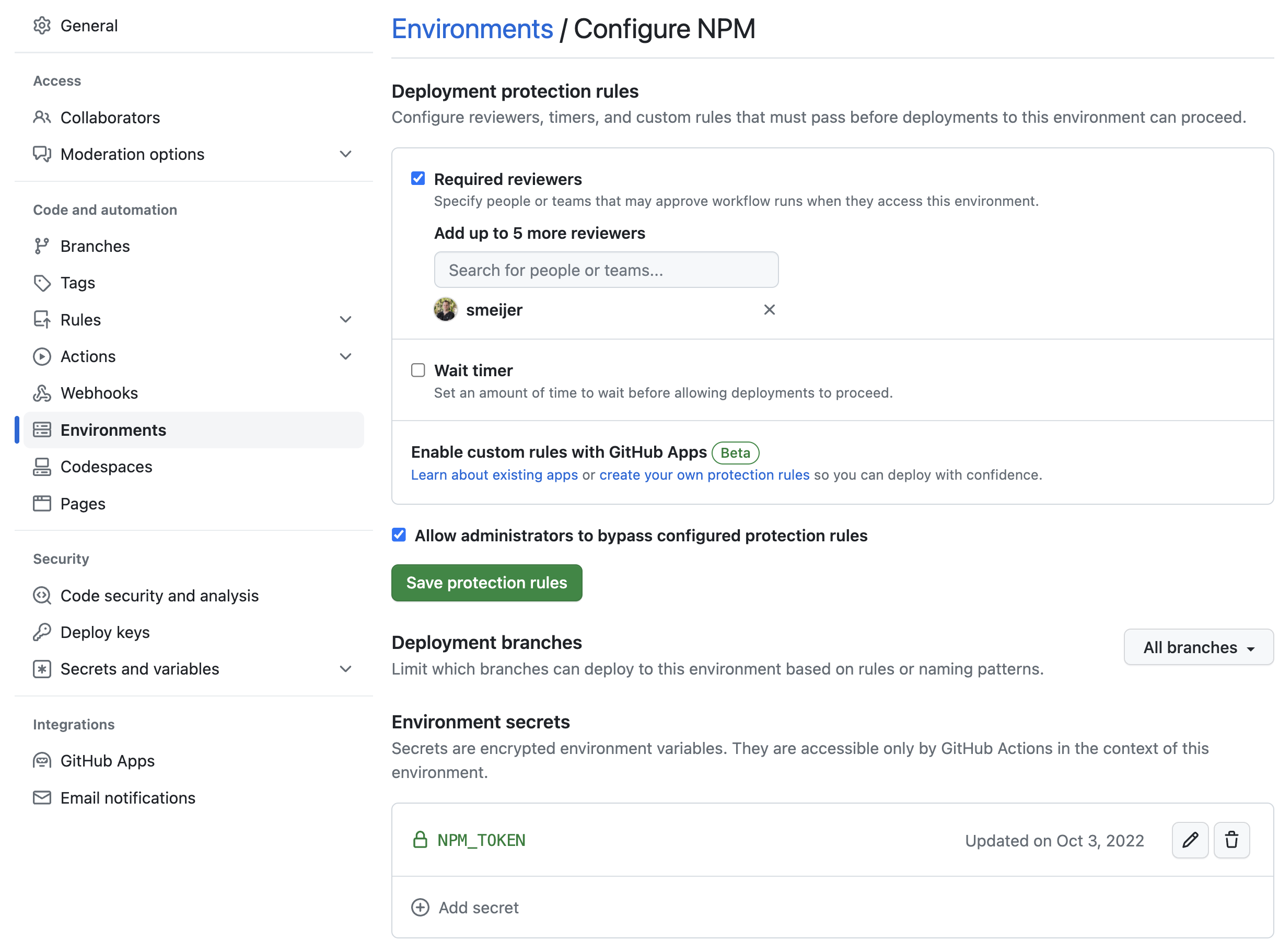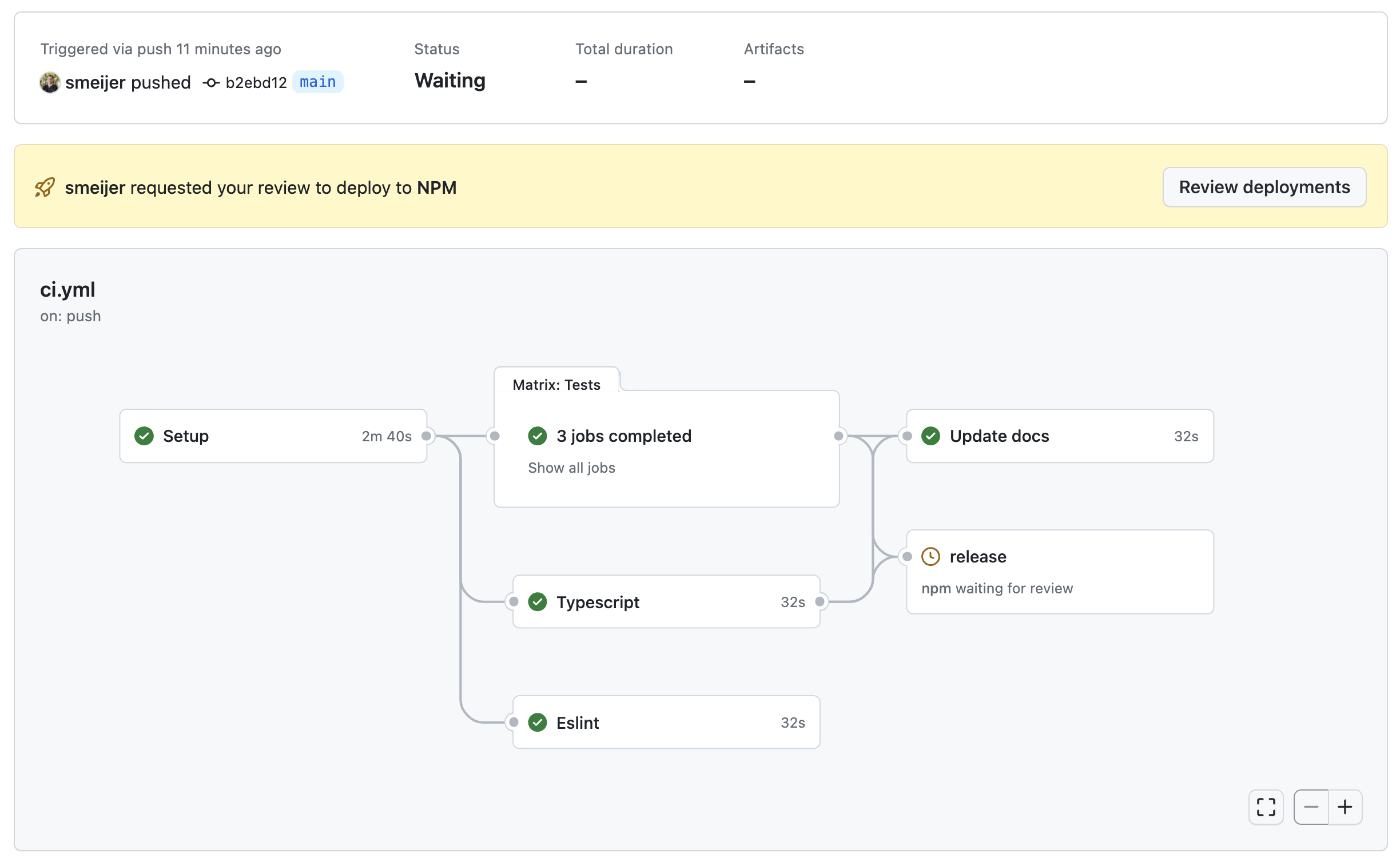Manual Approvals in GitHub Actions
In the world of continuous deployment we like to automate everything, and remove the human factor. For me, that's not always desired. I like to batch changes in a single release when I know that I'm going to merge more changes during a reasonable timeframe. I also don't always value "approve to merge" the same as "approve to release".
Though not much used in open-source projects, manual approvals are possible when using GitHub Actions. In my experience, it's a game changer.
To do so, we'll need to use GitHub Environments. In this article I'll explain you how make a GitHub Action job wait for a human. I'll use NPM publishing as example, but it's trivial to apply the same to say publish your website to your webhost.
The Environment
To add an environment, you'll need to go to your GitHub repository > settings > environments. Click "New environment", and give it a name. I'll name it "NPM".
Once created, you can adjust the settings for that environment. Make sure to enable the "Required reviewers", and to add your own name to the list of reviewers.
The "required reviewers" is what will show us the "approve button". The wait timer can be used to say deploy to production 1 day after the change was deployed to staging. We don't need that, just enable the required reviewers.
The "Environment secrets" can be used to add secrets that can only be used in jobs bound to this environment. I've added my NPM_TOKEN there.
Be sure to click "Save protection rules" when done.

The Action
To make this work, all you need to do is add environment: npm to your job definition. Remember that I've also added secrets to that environment? I can use those secrets in jobs that run on this environment, but not on the other jobs.
name: CI
on:
push:
branches:
- main
jobs:
release:
runs-on: ubuntu-latest
# environment is the magic key ✨
environment: npm
steps:
- uses: actions/checkout@v3
- uses: actions/setup-node@v3
- uses: bahmutov/npm-install@v1
- name: Build
run: npm run build
- name: Release
uses: cycjimmy/semantic-release-action@v2
env:
GITHUB_TOKEN: ${{ secrets.MY_GITHUB_TOKEN }}
NPM_TOKEN: ${{ secrets.NPM_TOKEN }}
And now the release job will only run after one of the reviewers has approved. Note that any other job still runs, unless you've build in a dependency using needs: [release].

Only publish the most recent change
Waiting for a human introduces one challenge. What if the last commit has been published, and you'll accidentally publish an older commit? To make sure that won't happen, we can use concurrency.
name: CI
on: # ...
concurrency:
group: ${{ github.workflow }}-${{ github.ref }}
cancel-in-progress: true
jobs: # ...
By adding the concurrency option, GitHub will cancel every currently running job except for the current one. Making it impossible to approve a release when there is a more recent publishable commit. If you need more control over this, it's worth checking out styfle/cancel-workflow-action/.
Honestly, I believe that concurrency is also worth adding without a manual step. Race conditions on GitHub actions are possible. Waiting for the task scheduler might cause a more recent commit to be published before the older one.
Don't run on forks
Bit out of scope, so a bonus item. Too often I'm seeing that forks also try to publish to NPM. Obviously, it'll fail due to lack of permissions. We can easily prevent that using a simple run condition so the job won't run on a fork.
name: CI
on: #...
jobs:
release:
if: github.event_name == 'push' && github.repository == 'smeijer/leaflet-geosearch'
runs-on: ubuntu-latest
environment: npm
steps:
# ...